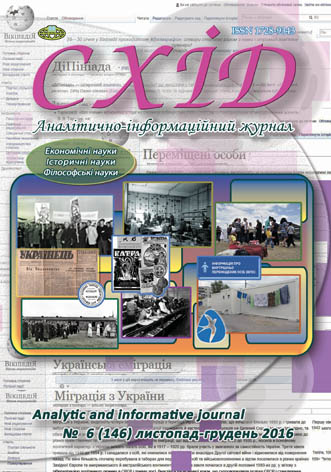The dialectic of neo-mythological patterns of the development of "carnival ritual" person in the works by Yuriy Andrukhovych
DOI:
https://doi.org/10.21847/1728-9343.2016.6(146).78856Keywords:
postmodern, neomyth, anthropology, post-totalitarian person, transcendental worlds, apocalyptical sensation of the universe, ritual, initiationAbstract
Artistic practices of postmodern art do not only express the principles of the conceptions of the world of modern culture but on the whole they prepare the anthropological "project" of a cosmopolit. But the danger of leveling and even ruining the system of the Ukrainian world outlook traditions exists in the framework of this project. In this article the author investigates the peculiarities of Yu. Andrukhovych' creative work in the context of the Ukrainian postmodern art. Thanks to the ironic form and extreme spontaneity in the choice of dedication and epigraph, postulates the model in which the contextual neo-mythological features are traced and the features reveal the essential peculiarities of the anthropological project of a "post-totalitarian" person. The author's tragic world-outlook and apocalyptical mood are hidden behind the humor and eclectic glare. It doesn't look like "banquet during the plague", but like the comprehension of the problem of one's existence under the totally new historic-cultural conditions. The neo-mythological axis is grounded on the Christian-mythological model-antithesis.
The neo-mythological peculiarities analyzed by the author interact with each other in the dialectical unity and make the organic entirety of the artistic work, they are actual for a contemporary person finding himself under the conditions of a transitional period when culture is looking for stable landmarks in its development.
It is proved that the neomyth by Yu. Andrukhovych was being built on the synthesis of Christianity and folk culture, ascertaining the European character of the Ukrainian culture and surge for its legitimacy, uniting together the Dianetical and Apologian features. It gave the author the chance to model the modern culture in the coordinates "Bu - bo - bu" (Burlesque - Booth - Buffoonery) and build the anthropological project in the direction of a Cosmopolitan pole.
Downloads
References
Andrukhovych, Yu. (2000), Moscoviada. Novel of Horrors, Ivano-Frankivsk, 152 p. (ukr).
Andrukhovych, Yu. (2002), Perversion, Lviv, 288 p. (ukr).
Andrukhovych, Yu. Recreations, available at: http://ukrlib.lviv.ua/skachaty-andruhovych-yu-rekreatsiji/ (ukr).
Bobrova, S.P. (2003), Miphological Consciousness as a System, Thesis for a Scientific Degree of a Doctor of Philisophy in specialty 09.00.01 «Onthology and Theory of Knowledge», Ivanovo, 295 p. (rus).
Mamardashvili, М. (2000), Vvedeniye v filosofiyu, in: Mamardashvili М. Moy opyt netipichen, St. Petersburg, P.45 (rus).
Milkin M. (2010), Discursive Analysis of Oksana Zabuzhko on the Example of the Novel “Perversion” by Yu. Andrukhovych, Doksa, Num. 15, р. 438-450 (ukr).
Baudrillard, J., Le systиme des objets, available at: :https://books.google.com.ua/books?id=0T33Ce5VocC&pg=PP5&hl=ru&source =gbs_selected_pages&cad=3#v=onepage&q&f=false.
Deleuze, G. & Guattari, F., A thousand plateaus, Capitalism and Schizophrenia. Treatise on Nomadology: The War Machine, рр. 351-424, available at: :http://projectlamar.com/media/A-Thousand-Plateaus.pdf.
Derrida, J., Of grammatology, available at: http://www.mohamedrabeea.com/books/book1_3997.pdf
Downloads
Published
How to Cite
Issue
Section
License
Copyright (c) 2017 Marianna Sharnina

This work is licensed under a Creative Commons Attribution-NonCommercial-NoDerivatives 4.0 International License.
1. Authors bear responsibility for the accuracy of facts, quotations, numbers and names used.
2. Manuscripts are not sent back.
3. The publisher does not always agree with the authors' opinion.
4. The authors reserve the right to authorship of the work and pass the first publication right of this work to the journal under the terms of a Creative Commons Attribution-NonCommercial-NoDerivatives 4.0 International License. This license allows others to distribute (copy) the published work for non-commercial purposes, provided there is mandatory attribution to its authors and a link to the first publication in our journal.
5. The authors have the right to conclude separate supplement agreements that relate to non-exclusive work distribution in the form in which it has been published by the journal (for example, to upload the work to the online storage of the journal or publish it as part of a monograph), provided that the reference to the first publication of the work in this journal is included.

